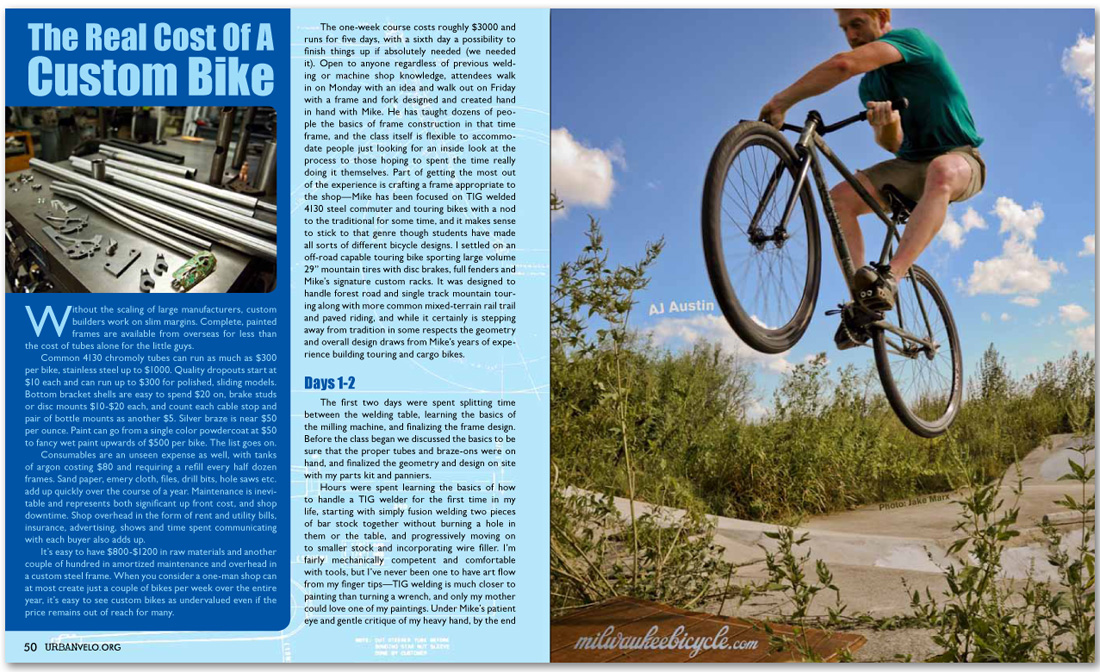


Days 1-2
The first two days were spent splitting time between the welding table, learning the basics of the milling machine, and finalizing the frame design. Before the class began we discussed the basics to be sure that the proper tubes and braze-ons were on hand, and finalized the geometry and design on site with my parts kit and panniers.
Hours were spent learning the basics of how to handle a TIG welder for the first time in my life, starting with simply fusion welding two pieces of bar stock together without burning a hole in them or the table, and progressively moving on to smaller stock and incorporating wire filler. I’m fairly mechanically competent and comfortable with tools, but I’ve never been one to have art flow from my finger tips—TIG welding is much closer to painting than turning a wrench, and only my mother could love one of my paintings. Under Mike’s patient eye and gentle critique of my heavy hand, by the end
The Real Cost Of A Custom Bike
Without the scaling of large manufacturers, custom builders work on slim margins. Complete, painted frames are available from overseas for less than the cost of tubes alone for the little guys.
Common 4130 chromoly tubes can run as much as $300 per bike, stainless steel up to $1000. Quality dropouts start at $10 each and can run up to $300 for polished, sliding models. Bottom bracket shells are easy to spend $20 on, brake studs or disc mounts $10-$20 each, and count each cable stop and pair of bottle mounts as another $5. Silver braze is near $50 per ounce. Paint can go from a single color powdercoat at $50 to fancy wet paint upwards of $500 per bike. The list goes on.
Consumables are an unseen expense as well, with tanks of argon costing $80 and requiring a refill every half dozen frames. Sand paper, emery cloth, files, drill bits, hole saws etc. add up quickly over the course of a year. Maintenance is inevitable and represents both significant up front cost, and shop downtime. Shop overhead in the form of rent and utility bills, insurance, advertising, shows and time spent communicating with each buyer also adds up.
It’s easy to have $800-$1200 in raw materials and another couple of hundred in amortized maintenance and overhead in a custom steel frame. When you consider a one-man shop can at most create just a couple of bikes per week over the entire year, it’s easy to see custom bikes as undervalued even if the price remains out of reach for many.
Milwaukee Bicycle Co.